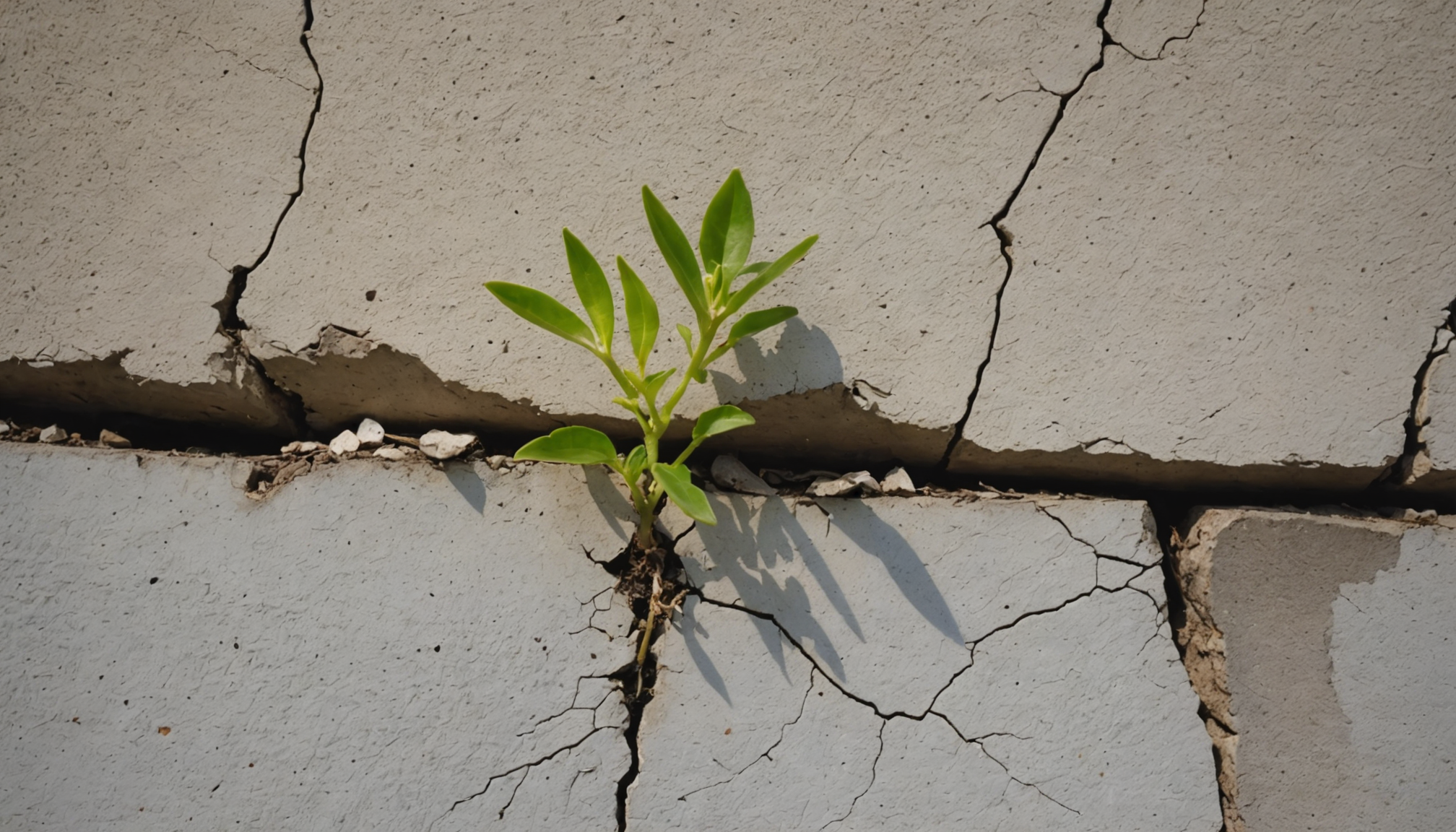Recognizing the common signs of foundation problems is crucial for homeowners to address potential issues before they escalate into costly repairs. An early detection of these symptoms can save significant time and resources, while also preserving the structural integrity and value of your home.
One of the first indicators of foundation trouble is the presence of visible cracks. These can manifest in various areas and forms, including hairline fractures in the interior or exterior walls, horizontal cracks in the basement walls, or diagonal cracking along window frames and corners. If left unchecked, these fissures may widen over time, signaling a changing structural state.
Another telltale symptom is doors and windows that become difficult to open or close. As foundational instability shifts the alignment of your home’s framework, you might notice doors and windows sticking or jamming. This misalignment not only presents a nuisance but also underscores potential foundation movement needing further assessment.
A sloping or uneven floor is an additional warning sign. Though gradual changes in floor levels might be subtle, severe slopes or sagging can reflect underlying foundational problems. Place a ball at various points across the floor; if it rolls swiftly or consistently in one direction, it may indicate foundational settling or heaving.
Look for gaps around exterior window frames or doorframes. These gaps are often results of the wall’s movement and can serve as clear evidence of foundation issues. Check to see if moldings, for instance, look out of place or unnatural in their positioning.
Also, be alert to the presence of water or moisture in the basement or crawl spaces. Water intrusion often accompanies foundation damage and may lead to more serious problems such as mold growth or weak/stressed foundation walls. Utilize moisture meters to assess the humidity levels consistently and inspect for any pooling or trickling of water.
In regard to the exterior, examine the footprint and perimeter of your home. Bulging or bowing walls, as well as visible separation between the base of your home and the earth, can signal that your foundation is tugging away from the ground due to poor support or pressure.
The following table summarizes common signs of foundation problems and their potential causes:
| Sign | Potential Cause |
| Wall Cracks | Foundation settling, moisture level changes |
| Sticking Doors/Windows | Shifting foundation, poor initial alignment |
| Uneven Floors | Foundation heave, soil movement |
| Gaps in Window/Door Frames | Structural movement, settling |
| Moisture in Basement | Water leakage, poor drainage, foundation cracks |
Ultimately, understanding and identifying these common signs enable homeowners to address foundation concerns proactively. Engaging with a professional inspector or structural engineer to investigate these symptoms further is advisable, especially when any of these signs are prominently observed. Their expertise will help determine the underlying cause and guide appropriate actions.
causes of foundation damage
Foundation damage can stem from a variety of sources, each affecting the structural integrity of your home in different ways. Understanding the root causes of foundation issues is vital for homeowners seeking to prevent and address these concerns effectively. Here are some common reasons problems may arise:
- Soil Moisture Variations: One of the primary contributors to foundation damage is the fluctuation of soil moisture levels. When the ground around a foundation experiences significant wetting and drying cycles, it can cause the soil to expand and contract. These shifts exert pressure on the foundation, often leading to cracks and eventual structural compromise.
- Poor Drainage: Insufficient drainage systems exacerbate soil moisture problems. Rainwater or runoff that isn’t channeled away from the house can accumulate around the foundation, increasing moisture levels and promoting soil swelling. Ensuring proper drainage, including well-maintained gutters and downspouts, is essential to protect against water-related damage.
- Inadequate Soil Preparation: Foundations that are built on poorly compacted or unsuitable soil types, such as clay or silt, may suffer from poor load-bearing capacity. This can result in uneven settlement or sinking. Before construction, soil assessments and preparation should address any deficiencies to provide a stable foundation bed.
- Tree Root Intrusion: Trees and large shrubs planted too close to the structure pose a risk to the foundation. As they grow, their roots seek moisture and can draw it from the soil beneath your home, causing the soil to shrink and contract. Additionally, roots can physically push against foundation walls, leading to cracks or displacement.
- Temperature Extremes: Significant temperature changes can also impact a home’s foundation. Intense heat can dry out the soil, causing it to contract, whereas frost and freezing conditions can cause soil to expand, a process known as frost heave. The repeated expansion and contraction related to temperature shifts may gradually damage the foundation structure.
- Poor Construction Practices: Skimping on quality materials or neglecting crucial construction steps can compromise a foundation’s durability from the start. Corner-cutting during the construction phase, such as failing to use proper reinforcements or rushing the curing process of concrete, can lead to premature foundation issues.
- Settling and Shifting Soil: Natural settling occurs in all new constructions, but when excessive, it can be indicative of underlying issues with soil stability. Continuous soil movement beneath the foundation creates stress that can lead to misalignment and cracking.
By recognizing these key causes, homeowners can better understand the importance of proactive measures in maintaining the health of their foundation. Proactive management, such as ensuring proper water management and seeking expert advice when planting large trees near the home, can significantly reduce the likelihood of foundational damage.
choosing the right repair method
When it comes to safeguarding your home from the significant implications of foundation damage, selecting the most appropriate repair method is a critical decision. Opting for the right approach depends on the specific issues affecting your foundation, as well as an understanding of the various repair techniques available. It’s important to tailor the solution not only to the symptoms but also to the underlying causes of your home’s foundation issues for optimal results.
One of the widely used methods is slab jacking, which is particularly effective for shifting or settling concrete slabs. This process involves injecting a grout mixture beneath the affected slab to lift it back to its original position, providing stabilization and correcting any tilt. Slab jacking is favored for its quick execution and minimal disruption to the home.
For more severe cases involving cracked walls or bowing foundation walls, steel or carbon fiber reinforcements may be necessary. These materials are applied to the affected areas to reinforce the structural integrity. Steel beams can be installed vertically against the interior basement walls, while carbon fiber straps offer a modern, less invasive solution that’s both strong and lightweight, ideal for handling pressure and preventing further bowing.
When dealing with foundation settlement, piering systems offer a reliable solution. There are different types of piers, including push piers and helical piers. Push piers are hydraulically driven into the ground until they reach stable soil or bedrock, transferring the structure’s weight onto these stable layers. Helical piers, on the other hand, are screwed into the ground and are more suitable for lighter structures or areas with softer soils. Both options serve the purpose of stabilizing and potentially lifting the foundation back to its original position, ensuring long-term stability.
In instances of uneven or sloping floors, floor joist and beam strengthening might be necessary. This method involves reinforcing the existing wooden beams with additional supports or replacement with stronger materials, for example, along with adjusting the existing supports to ensure a level flooring surface.
Addressing drainage issues is also a crucial component in choosing the right repair method. Installing French drains, improving surface grading, or enhancing gutter and downspout systems helps in preventing water accumulation around the foundation, which can avert future damage. In some cases, waterproofing membranes might be installed alongside other repair methods to offer extra protection against water infiltration.
It is vital to consult with experienced foundation repair professionals who can conduct a comprehensive assessment of your property. They can accurately diagnose the specific problems and recommend the most effective repair strategy tailored to your home’s needs. Investing in the right repair method not only resolves current issues but also fortifies your foundation against future problems, safeguarding your home’s structural integrity for years to come. With a sound strategy in place, homeowners can rest easy knowing their homes are anchored on solid ground, both literally and figuratively.
cost considerations for foundation repair
When considering the financial implications of foundation repair, it’s essential for homeowners to be aware of the factors that can influence the total costs. While foundation repair is often viewed as a significant investment, understanding the elements involved can help in making informed financial decisions.
Firstly, the extent and severity of the foundation damage play a critical role in determining costs. Minor cracks or slight adjustments can be relatively affordable, involving straightforward fixes like crack injection or minor slab jacking. However, extensive issues such as severe settlement that necessitate underpinning with piers can be more costly, as they require more labor and materials.
The choice of repair method also significantly affects the cost. Traditional methods like piering, which involves driving steel piers into stable soil, can be expensive due to the complexity and labor-intensive nature of the work. In contrast, techniques like carbon fiber reinforcement might be more cost-effective while still providing lasting results, particularly for addressing bowed walls without extensive excavation.
Geographical location matters too; some areas have higher labor costs or specific local regulations that may impact repair expenses. Additionally, the type of soil in your region can dictate which repair methods are necessary, influencing the cost. For example, homes built on expansive clay soils might encounter different challenges and associated costs than those on sandy soils.
Another factor is the size and accessibility of the affected area. Larger homes or those with difficult-to-reach foundations, such as homes with limited crawl space, may incur higher expenses due to the increased difficulty and time required for repair.
Material costs should also be considered. Higher-quality materials, such as galvanized steel for piers or advanced epoxy formulations for crack repair, can increase the upfront cost but offer long-term benefits by preventing future issues.
Homeowners should also budget for ancillary expenses that might arise in conjunction with foundation repair. This can include cosmetic repairs to floors and walls affected during the process, improvements to drainage systems to prevent recurrence of issues, or landscaping alterations post-repair.
Estimates from multiple reputable foundation repair companies can help homeowners compare pricing and ensure transparency regarding what is included in each quote. Some companies offer financing options or payment plans, making it feasible to manage the costs over time. Additionally, homeowners insurance may cover certain types of foundation damage, so checking your policy details is advisable to understand what might be covered.
Being knowledgeable about these cost considerations not only helps in setting realistic expectations and budget planning but also ensures that necessary repairs are approached strategically. Investing wisely in foundation repair can ultimately preserve property value and maintain structural safety, reinforcing the importance of addressing foundation problems with urgency and care.
preventing future foundation issues
Implementing preventive measures is essential to safeguarding your home’s foundation from future damage. One crucial step is to maintain a consistent moisture level around your foundation. This can be achieved through proper landscaping and irrigation techniques, such as placing plants at an appropriate distance to prevent their roots from leaching too much moisture or causing obstruction, and using soaker hoses to keep the soil evenly moist during dry spells.
Ensure that your home’s drainage systems are functioning optimally. Regularly clean out gutters and downspouts to prevent clogs that can cause water to pool around the foundation. It is also important to extend downspouts away from the house, ideally directing water at least several feet away to minimize hydrostatic pressure on the foundation.
Soil grading can significantly impact foundation health, as well. Make sure the ground surrounding your home slopes away, encouraging water runoff rather than accumulation. A minimum slope of 6 inches over a 10-foot span is generally recommended to facilitate proper drainage.
Regular inspections of your home’s foundation and the surrounding property can help catch potential issues before they develop. Look for new cracks, gaps, or changes in the alignment of doors and windows, and address any small problems promptly.
Foundation maintenance is another key aspect of prevention. This includes sealing any minor cracks as they appear to prevent water intrusion and monitoring any previously repaired areas for signs of recurrence. Moreover, carrying out routine assessments of basement or crawl space humidity levels can avert moisture-induced complications that might affect the foundation.
If your home is located in a region prone to seismic activity or frequent soil shifting, it may be worth considering the installation of seismic retrofitting or support structures, such as wall braces or stronger beam frameworks, to enhance the foundation’s resistance to these forces.
By integrating these preventive strategies, homeowners can greatly reduce the risk of future foundation issues and preserve the longevity and value of their property. Regular maintenance and vigilance play a pivotal role in ensuring your home remains structurally sound.
In conclusion, understanding the signs of foundation problems, their causes, choosing the right repair methods, considering cost factors, and implementing preventive measures equips homeowners with the knowledge needed to address and mitigate foundation issues effectively. By taking proactive steps and seeking professional advice when necessary, homeowners can protect the structural integrity and value of their homes, ensuring a safe and stable living environment for years to come.


